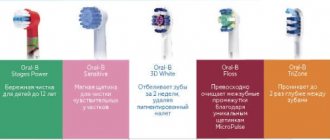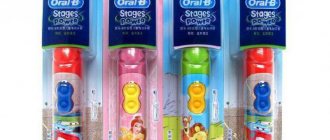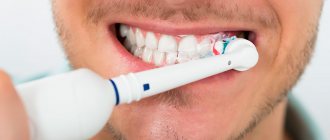Description
Skylers can be integrated into stationary equipment and connected to other dental instruments.
Can work in two modes: water and normal. Using attachments, you can polish enamel and prepare crowns and orthodontic implants for installation. Skylers are easy to use, intuitive and ergonomic. All hoses and nozzles are easily disconnected and treated with solutions.
Dental scaler is used for:
- eliminating plaque on enamel and gums;
- polishing the enamel after cleaning;
- preparing teeth for filling;
- cleansing the oral cavity from microorganisms;
- cleaning orthodontic structures;
- diagnostics of oral health.
The device operates using oscillatory vibrations without creating discomfort for the patient. The scaler can be combined with any type of dental accessories. All models are equipped with soft ergonomic tips.
The dental scaler gives a certain sound signal if it senses dental plaque in inaccessible places.
Types of scalers
- built-in;
- autonomous.
Autonomous equipment does not require special installation. It operates independently of the fixed dental device. This differs from a built-in scaler, which requires special installation.
Advantages of stand-alone equipment over built-in equipment:
- does not require dismantling when replacing stationary equipment;
- allows the use of additional dental solutions;
- is characterized by mobility and independence from the place of treatment;
- can be combined with any stationary equipment.
However, portable ones have their drawbacks. They require careful observance of storage conditions, and before use they require adjustment.
Skylers without a water mode are of little use for dental offices.
Depending on the technology used, scalers are:
- with magnetostrictive drive;
- piezoceramic;
- air driven;
- with and without backlight.
The most common are air driven scalers. Air-driven devices are cheaper than piezoceramic devices, and the latter are distinguished by high power.
In addition to cleaning enamel and dental pockets from plaque, scalers are used in implantology. With the help of attachments, dentures and implants can be well prepared for installation. Scalers also prepare dental canals for subsequent filling.
Advantages and disadvantages
A dental scaler has the following advantages over conventional dental equipment:
- careful treatment of soft gum tissues in case of accidental touch;
- does not cause mechanical damage to orthodontic structures during cleaning;
- increases the accuracy of medical manipulations;
- independently coordinate the pressure power when working with dental plaque: increase or decrease the load on the tissue.
Flaws:
- pain when clearing deposits in sensitive patients (local anesthesia required);
- damage to gum tissue is possible when cleaning very hard deposits;
- care when cleaning deposits in patients with implants.
There are also contraindications to the use of skylers to cleanse enamel:
- acute heart failure;
- allergy to solutions;
- stationary implants;
- bronchial asthma, breathing problems;
- the presence of foci of inflammation;
- reduced immunity;
- Small children.
The price of scalers depends on the number of functions performed and the country of production.
Removing dental plaque: methods used in modern dentistry
To remove dental plaque in dentistry, physical and hardware methods can be used. In the first option, special tools are used to remove deposits - stone and plaque - hooks, scalers, finishers. However, the physical method of removing dental plaque is used quite rarely, only when there is a need to remove tartar from deep gum pockets, from which it is difficult to remove it in other ways.
Why has removing dental plaque with hand instruments become unpopular among modern dentists? It's simple, this method is less advanced than modern technologies for removing plaque and tartar. Manual removal of dental plaque is a labor-intensive process, the effectiveness of which will largely depend on the level of knowledge and qualifications of the dentist. Moreover, when manually removing dental deposits, irregularities remain on the teeth, in which plaque will accumulate even more actively.
Due to the considered disadvantages, manual removal of dental plaque is rarely carried out; hardware methods for removing plaque and tartar are more often used - Air Flow technology and ultrasonic cleaning.
Air Flow technology for removing dental plaque
This technology is ideal for removing soft and pigmented deposits from tooth surfaces.
The procedure for removing plaque is quick and without discomfort for the patient and, in addition to removing plaque, it helps to lighten the tooth enamel a little - by approximately 2-3 shades, to its natural shade. When removing dental plaque using Air Flow technology, teeth are cleaned by applying a powerful air-water flow to their surface, which contains abrasive particles (soda).
Air Flow dental plaque removal is an effective and gentle method of combating plaque, but with all its advantages, it does not help get rid of tartar. To carry out high-quality removal of hard dental deposits, teeth are cleaned with ultrasound. We will talk about this technology in detail in a separate section of our article.
Principle of operation
The device is developed based on ultrasonic stimulation of tissue, which destroys solid formations. The dentist coordinates the frequency of ultrasound vibrations, selecting the optimal mode. During operation, a liquid is constantly supplied that washes the oral cavity, removes separated plaque and anesthetizes the patient.
It consists of a main unit with a fluid supply coordinator, a power supply, a power pedal, a removable hose with a tip and fluid supply functionality.
The scaler tip easily integrates various attachments and other dental instruments.
Stages of cleaning plaque with a skyler:
- The nozzle of the device is inserted into the oral cavity, and ultrasonic waves are applied through it. During operation, liquid is constantly supplied to clean the removed deposits. The liquid is removed from the oral cavity using a saliva ejector. Since the nozzle glides over the surface of the enamel, this protects soft and bone tissues from possible injury.
- After removing plaque, the enamel is polished. This is necessary to remove remaining pieces of hard deposits and clean the surface from uneven surfaces. For polishing, abrasives can be used, as well as the addition of bleaches.
- After this, fluoridation of the teeth is carried out. This is necessary to strengthen thinned enamel after removing hard deposits and enriching the enamel with mineral elements.
Advantages and disadvantages of brushing teeth with a scaler
Many patients are interested in whether ultrasound is harmful to tooth enamel. Dentists claim that the procedure is absolutely safe and painless even for patients with thinned enamel. The scaler has a gentle effect on bone tissue without changing its strength or injuring the surface layer. After the procedure, no cracks, chips or other damage occurs on the elements.
Removing dental plaque using ultrasound is considered a gentle and at the same time effective technique. Ultimately, the patient receives smooth, snow-white enamel. The cleaning procedure does not cause discomfort and takes no more than 30 minutes.
Teeth whitening with gel
Hardware cleaning has its disadvantages:
- The procedure is painful for people with sensitive enamel. In these cases, an anesthetic is injected into the patient's gums before the procedure.
- Ultrasound can damage soft gum tissue when removing old plaque.
- The need for careful cleaning if there are orthodontic structures in the patient’s mouth.
The method is not suitable for people who suffer from allergies to fluoride, salt or soda. Tartar can be removed from the enamel no more than once every 6 months.
It is worth noting some contraindications for cleaning elements using ultrasound:
- tendency to allergic reactions;
- disruption of the cardiovascular system;
- the presence of fixed orthodontic structures in the oral cavity;
- chronic diseases of the respiratory system – bronchitis, asthma;
- immunodeficiency state;
- childhood;
- inflammatory processes in the oral cavity.
Removal of dental plaque using an ultrasonic device is possible during pregnancy. In any case, only the doctor determines whether the procedure is suitable for a particular patient or not.
Review of scalers
Models from different manufacturers are available on the market:
- Japanese NCK;
- Swiss EMS;
- German VDW GmBh;
- Chinese Pragmatic and Woodpecker;
- French ACTEON Group.
Woodpecker
Devices from a Chinese manufacturer are distinguished by their low price and great operating comfort.
Three types of nozzles are used for work:
- for oral hygiene, removal of plaque and stone;
- for removing hard deposits and treating carious surfaces;
- for cleaning periodontal pockets from deposits.
Model DTE-D7 LED
This is a self-contained model with optics, equipped with a diaphragm pump to create high pressure. The scaler provides different types of dental procedures:
- removing plaque;
- periodontal therapy;
- endodontic therapy.
The kit includes two fluid reservoirs, 8 nozzles and holders for them. During treatment, solutions of sodium hypochlorite and chlorhexidine can be used.
The model features an ergonomic design, an autonomous water supply system, and autoclavable nozzles with removable tips (with LED backlight). It has compact volumes, light weight, digital control, and a pedal.
Model DTE-D6 LED
A self-contained device made in China, it is lightweight and has an ergonomic design. Six attachments are used to remove plaque from the frontal areas of the crown, as well as to prepare the dental canal of the front teeth for filling. The tip is equipped with LED lighting, there is a reservoir for dental solutions with an autonomous liquid supply.
The kit includes an endochuck with which you can carry out endotherapy. The device is not much inferior to its European analogues, and in some ways it is superior to them. The scaler is easy to clean and disinfect.
NSK Varios 970 LUX LED
This is a self-contained scaler made in Japan, with LED backlighting and optics. The set includes two reservoirs for liquids, three nozzles, and an autonomous water supply. The nozzle tip is equipped with optics and two LEDs.
Piezon 250 LED
The Swiss multifunctional scaler model is characterized by high quality of manipulations and a low noise threshold.
Performed operations:
- removal of dental plaque;
- endodontic manipulations;
- periodontal therapy;
- work with implants.
ULTRA VDW VDW GmBh
This German-made model is designed for endodontic therapy, but also copes with the removal of plaque and tartar. Despite the absence of optics and illumination, the device performs many different manipulations and ensures high quality of treatment.
Built-in skyler DL 920
A distinctive feature is automatic water supply and lighting. The functionality of the device is expanded by the possibility of using numerous attachments. The light ergonomic shape of the scaler does not have a significant impact on the hand, so you can work with the device for a long time. The touch control unit fully controls the operating mode, facilitating manipulations with the patient.
Allows you to eliminate small plaque, hard deposits, deposits stained by drinks and tobacco, and clean small periodontal pockets.
Equipment types
The scaler is divided into several types: built-in and stand-alone. In the first case, the equipment is always at hand by the specialist and is attached to the dental unit in the doctor’s work area. The disadvantage of built-in models is the complexity of selection and installation. Problems often arise during installation of the device when the scaler does not match the operating characteristics of the working area mechanism.
The stand-alone device does not require installation. It functions due to the elements with which its body is equipped.
A standalone scaler has a number of advantages over a built-in one:
- Saves money in cases where the clinic is replacing outdated dental equipment.
- The device is equipped with an isolated liquid supply system. The water flow comes through a special tank.
- Enables dentists to use a combination of different solutions to sanitize the oral cavity.
- The device allows the dentist to take any convenient position relative to the patient due to mobility.
The autonomous device can be transferred from one office to another. This type of device also has a number of disadvantages. It must be stored in a specially designated place so that it does not fail prematurely. There is an increased risk of damage to the device due to its constant movement. In addition, the stand-alone device requires preparation before use. The built-in scaler is always ready for use due to its connection to the dental unit.
An ultrasound device is especially necessary when cleaning gum pockets and treating periodontitis. In surgery, it is used to clean root canals and remove their contents. The device is widely used in restorative dentistry. Before purchasing a device, doctors need to familiarize themselves with all models of scalers presented on the modern market and study their characteristics in detail. One of the most popular equipment models is the air flow device.
What to choose?
The problem of choice depends on functionality, quality and price. Let's look at different types of skylers.
Air driven
These devices are the cheapest, but are not very powerful. Installing the skyler is not difficult: the device is mounted on the air hose of a permanent installation.
Built-in
The installation consists of integrating the electrical unit into the doctor's stationary unit. Built-in devices are distinguished by the highest power and are easily placed in a free slot in a stationary installation. Built-in appliances have a large selection of attachments.
With connection to a water source
These models are considered more comfortable and versatile to use than built-in ones. The set of functions depends on the manufacturer; you need to carefully study the instructions.
Autonomous
Ease of transportation from office to office. Removable hoses are easy to detach and wash. Skylers are equipped with an automated control system for mains voltage, supply of solutions, connection of nozzles and hoses, and operating mode. At the slightest problem, the sound warning system turns on; in the event of a breakdown, the device automatically turns off.
Nozzles:
- for removing dental plaque;
- for periodontal curettage;
- for surgical procedures;
- for the treatment of carious lesions;
- for endodontic therapy (endochucks).
When purchasing, you need to open the package and make sure that all components are in place.
Ultrasound removal of dental plaque: technique
If you only have supragingival deposits and/or pigment plaque on your teeth, then the cleaning procedure usually only takes about 1 hour. With this type of deposits, ultrasonic cleaning can be carried out even by a regular dentist.
Important: but if you suffer from periodontitis (inflammation of the gums), then cleaning is best done by a periodontist. This will give a greater guarantee that you will then have subgingival dental plaque removed, and also, if necessary, prescribed a course of home anti-inflammatory therapy, which will include rinsing the mouth with antiseptics and applying gels to the gums.
Removing dental plaque with ultrasound consists not only of an ultrasonic cleaning procedure, but also the mandatory subsequent polishing of teeth, and ideally, also fluoridation. Below, we will talk in detail about the intricacies of each stage.
Exploitation
In order for the equipment to serve for a long time, careful and competent treatment is necessary.
- Keep the device clean.
- Before each use, the nozzle and key must be sterilized.
- Do not install the attachment while the pedal is on (remove your foot from it).
- Check to see if the liquid is spraying through the nozzle.
- A damaged nozzle must be replaced with a new one.
- It is unacceptable to sharpen a worn-out attachment; it must be replaced.
- When screwing in the nozzle, do not apply any force.
- Control the fluid supply and do not allow it to accumulate between the hose and the nozzle.
- The hose must not be pulled during operation.
- After work, you must first turn off the power and then unplug it from the outlet.
- When attaching an attachment from another manufacturer, make sure that the threads are correct.
Water should flow into the handpiece without interruption, immediately after pressing the foot pedal. If this does not happen, check the attachment of the tip to the hose.
Skyler components must not be boiled in water, sterilized in alcohol or iodine solution, or dried in an oven or microwave. To sterilize parts, you must comply with the requirements specified in the instructions. This will ensure long life of the device.
Various problems may arise when operating devices. They are mainly caused by improper fastening of tips or other parts. The cord may also be damaged or the pedal may be loose. For other problems, please contact your dealer.
Do not install the equipment near flammable objects. Be careful when transporting. It is unacceptable for the skyler to get wet or to be exposed to the directed rays of the sun for a long time.
The autonomous Skyler must be stored in a dry, ventilated room. If you do not use the equipment for a long time, once a month you need to pass water through it and plug it into the network. 5-10 minutes are enough for this.
Warranty service for skylers is provided for a year.
Types of devices
Ultrasonic teeth cleaning equipment is divided into 3 types:
- piezoceramic, operating at a frequency of 40-60 kHz;
- ultrasonic;
- with a magnetostrictive drive, operating at a frequency of up to 35 kHz.
It should be noted that scaler models provide the best conditions for dental procedures:
- Sirosonic L. Ultrasonic device with adjustable power level.
- Varios VA170 LUX – built-in scaler with the latest iPiezo technology
- Varios VA970 LUX is a stand-alone model with dual LEDs.
Doctors note that the success of the procedure will depend not only on the specialist’s ability to carry out the work competently and the modernity of the equipment, but also on the patient’s oral care at home. To prevent the formation of tartar, it is recommended to regularly (morning and evening) clean your teeth with a brush or paste. Additionally, flosses and irrigators are used. These devices will eliminate food particles and plaque in hard-to-reach places and interdental spaces. An electric brush helps to significantly reduce the amount of hard and soft deposits.
Bottom line
Modern ultrasonic scalers are the latest generation of dental devices that can be used to analyze and monitor the condition of tooth enamel and orthodontic implants. Smart devices themselves detect the accumulation of plaque and send a signal. Using a scaler, you can carry out a high-quality and gentle procedure for removing tartar. The scaler is also used as an irrigator to irrigate the oral cavity during and after treatment.
There are two types of skyler models: stand-alone and built-in. For stationary offices, built-in ones are chosen. However, stand-alone scalers can also be used in your office. They are cheaper and do not require installation.
Sources used:
- Chilikin, V.N. Latest technologies in aesthetic dentistry / V.N. Chilikin. — M.: MEDpress-inform
- Ronkin, Konstantin Modern methods of teeth whitening / Konstantin Ronkin. - M.: Dental Kaleidoscope LP, 2011.
- Official website of the Russian Dental Association
What is dental plaque and how is it removed in dentistry?
Dental plaque is plaque that remains on the teeth after eating or drinking. This plaque contains large quantities of various bacteria and pathogenic microorganisms that harm the health of our teeth and gums. If soft dental deposits are not removed by regular brushing, they will gradually harden and turn into stone, which cannot be removed at home. Both hard and soft deposits on teeth increase the risks of developing caries, periodontitis and periodontal disease. Therefore, you need to deal with their timely removal.
Some people think that brushing their teeth every day will be enough to completely remove plaque, but this is not true. Even if you carry out dental hygiene according to all the rules and using all the recommended tools (brushes, brushes, floss), you will still not be able to carry out high-quality removal of deposits from hard-to-reach places in the oral cavity - interdental spaces, in the space above and below the gums. For this reason, to remove dental plaque, you need to go to dentistry and carry out the procedure using professional techniques and instruments.
To remove dental plaque in modern dentistry, various methods are used, and below we will consider in detail the most popular methods of cleaning teeth and the oral cavity from plaque and tartar.
Calculate the cost of treatment by taking a short test in 20 seconds!
Do not delay your treatment, because in this matter time plays against us.









